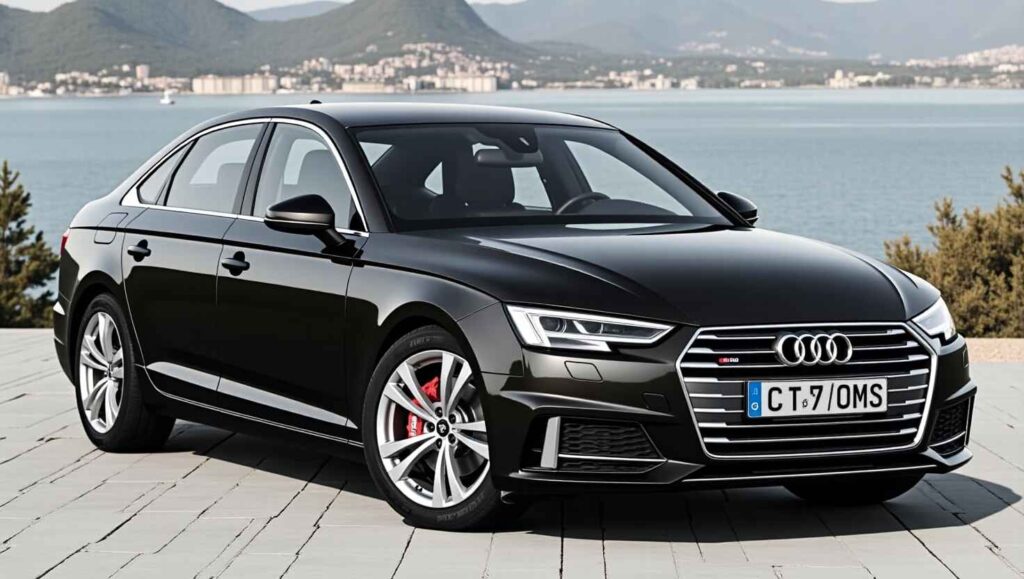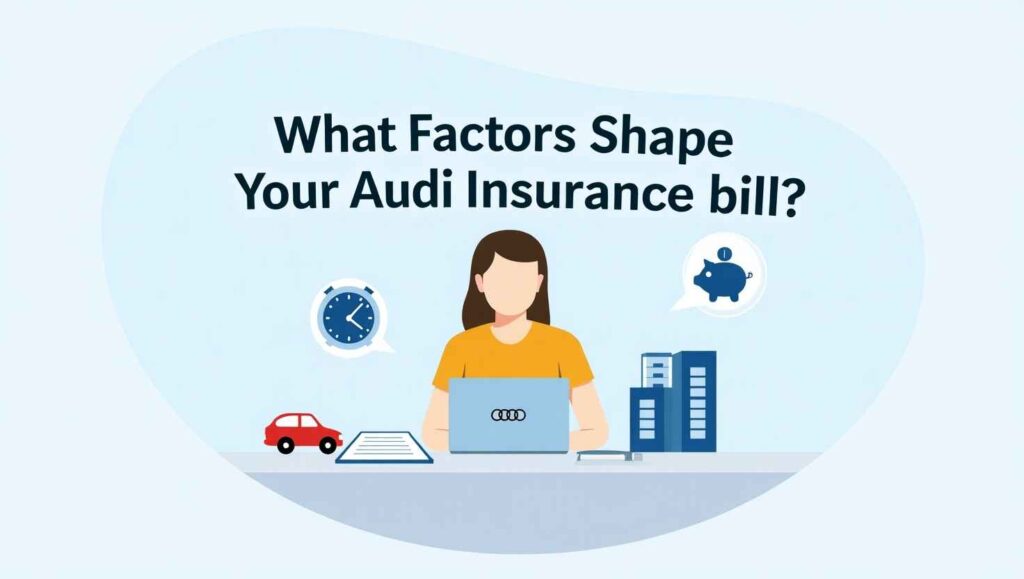Dreaming of zipping around in a sleek Audi, with its polished curves and purring engine? Before you sign on the dotted line, there’s one question you might be mulling over: Are Audis expensive to insure? As a luxury brand, Audi comes with a certain prestige—and yes, sometimes a heftier insurance bill. But is it really as bad as the stereotype suggests, or are there ways to keep costs in check? Let’s dive into the nitty-gritty of Audi insurance, unpack what drives those premiums, and share some insider tips to save you cash—all while keeping things light and easy to digest.
Why Do Audis Cost More to Insure? The Luxury Lowdown
Audis aren’t your average ride, and their insurance premiums often reflect that. According to data from the Insurance Institute for Highway Safety (IIHS), luxury vehicles like Audis can cost 10-20% more to insure than mainstream brands like Toyota or elantra. But why? Let’s peel back the curtain:

- Sky-High Repair Costs: Audis are built with precision, but that comes at a price. Specialized parts—like a sensor for the adaptive cruise control or a carbon-fiber panel on an R8—can cost a small fortune. For example, repairing a damaged Audi headlight can run $1,500-$3,000, compared to $300-$600 for a standard sedan. Labor rates at certified Audi shops also tend to be higher, pushing up claims costs for insurers.
- Big-Ticket Car Value: Audis don’t come cheap. A 2025 Audi A4 starts at around $42,000, while a fully loaded Q8 e-tron can top $90,000. Higher car value means higher replacement or repair costs, which translates to pricier premiums. Insurers know that totaling a luxury car hits their wallet harder.
- Theft Magnet Status: Audis scream sophistication, and unfortunately, that makes them a target for thieves. The National Insurance Crime Bureau (NICB) lists luxury vehicles among the most stolen, with models like the Audi A6 occasionally popping up on hotlists. Higher theft risk = higher rates.
- Performance Power: Many Audis, especially the S and RS lines, pack serious horsepower. More speed can mean more risk of accidents—or at least, that’s how insurers see it. A 2025 Audi S4, with its 349-hp turbo V6, is fun to drive but might nudge your premiums up compared to a tamer A3.
But it’s not all doom and gloom. Audis also come loaded with safety tech—like automatic emergency braking and blind-spot monitoring—that can shave a few bucks off your bill. More on that later!
What Factors Shape Your Audi Insurance Bill?

Insurance isn’t a one-size-fits-all deal. Your Audi’s insurance cost depends on a mix of factors, from the model you drive to your personal profile. Here’s a quick rundown:
| Factor | Why It Matters |
|---|---|
| Car Value | More expensive Audis (like the $190,000 R8) cost more to replace, hiking premiums. |
| Repair Costs | Specialized parts and labor for Audis can double repair bills vs. non-luxury cars. |
| Theft Risk | Flashy Audis attract sticky fingers, especially in urban areas. |
| Driver Profile | Your age, driving record, and even credit score can sway rates significantly. |
| Safety Features | Advanced tech like lane-keep assist can lower premiums by reducing accident risks. |
| Location | City dwellers pay more due to traffic, theft, and parking mishaps. |
Think of it like a recipe: your premium is the final dish, and these factors are the ingredients insurers toss into the pot.
Which Audi Models Break the Bank to Insure?
Not all Audis are created equal—at least when it comes to insurance. High-performance beasts like the R8 will cost you more than a practical Q5. Based on 2025 estimates from sources like Quadrant Information Services, here’s how some popular models stack up for a 40-year-old driver with a clean record:
| Audi Model | Avg. Annual Premium | Why It Costs That Much |
|---|---|---|
| Audi R8 | $4,800 – $6,800 | A supercar with a 602-hp V10, rare parts, and sky-high repair costs. |
| Audi Q7 | $1,800 – $2,400 | A plush SUV with pricey electronics and hefty replacement costs. |
| Audi A8 | $1,700 – $2,200 | A flagship sedan loaded with tech that’s expensive to fix (think $5,000 for a new grille). |
| Audi Q5 | $1,400 – $1,800 | A compact SUV that’s relatively affordable to insure, thanks to lower repair costs. |
| Audi A3 | $1,200 – $1,600 | Entry-level sedan with simpler tech and cheaper parts, keeping premiums reasonable. |
Pro tip: If you’re eyeing an Audi but worried about insurance, the A3 or Q5 might be your wallet’s best friend. The R8? That’s a love affair that’ll cost you—big time.
Your Driving History: The Premium Game-Changer
Your Audi might be a masterpiece, but insurers care just as much about you. A clean driving record can keep your rates manageable, while a spotty one can send them soaring. According to a 2024 study by The Zebra, here’s how your driving history impacts Audi premiums:
- Clean Record: You’re the golden child, potentially saving 20-30% compared to drivers with blemishes.
- One Speeding Ticket: Expect a 10-15% bump in rates. Insurers see speeders as accident-prone.
- At-Fault Accident: A single crash can hike premiums by 30-50%, especially with a luxury car’s repair costs.
- DUI: Ouch—this could double your rates or more, with some insurers dropping you entirely.
Young drivers (under 25) get hit hardest. A 20-year-old insuring an Audi Q5 might pay $2,500-$3,500 annually, while a 40-year-old with a clean record could pay half that. Why? Stats show younger drivers are involved in 13% of fatal crashes despite being only 8% of licensed drivers (NHTSA data). Insurers aren’t taking chances.
Location, Location, Location
Where you park your Audi matters—a lot. Urban jungle or rural retreat? Your zip code can swing your premium by hundreds. Here’s the deal, backed by 2025 insurance trends:
- Urban Areas: Cities like Los Angeles or Miami mean more traffic, theft, and fender-benders. Premiums for an Audi Q7 in LA might hit $2,500/year, vs. $1,800 in a quieter suburb.
- Coastal Zones: Live near the Gulf Coast? Hurricanes and flooding risks can push rates up 10-20%. In Florida, Audi owners might pay $2,200 for an A4, compared to $1,600 in landlocked states.
- Rural Retreats: Fewer cars, less crime—rural areas often see premiums 15-25% lower. An Audi A3 in rural Montana could cost as little as $1,100/year to insure.
Fun fact: Some insurers use “telematics” to track your driving habits. If you’re in a low-risk area and drive like a saint, you could score discounts. Just don’t let them catch you flooring it on the freeway!
Young Drivers and Audis: A Costly Combo
If you’re under 25 and craving an Audi, brace yourself. Insurers see young drivers as walking risks, and pairing that with a luxury car is like waving a red flag. A 2024 Bankrate report notes that 18-year-olds pay 2-3 times more than 40-year-olds for the same car. For an Audi A3, that could mean $3,000-$4,500/year for a teen vs. $1,200-$1,600 for their parents.
Why the gap? Younger drivers are statistically more likely to crash—think texting, speeding, or just plain inexperience. Add an Audi’s pricey repairs, and insurers crank up the rates to cover their bases. If you’re a young driver, consider starting with a used A3 or sharing a family policy to ease the sting.
Does Audi’s Fancy Tech Save You Money?
Here’s a silver lining: Audis are packed with safety features that can nudge your premiums down. Most 2025 models boast:
- Automatic Emergency Braking: Cuts rear-end collisions by up to 50%, per IIHS.
- Lane Departure Warnings: Reduces lane-drift crashes, which make up 15% of accidents.
- Adaptive Cruise Control: Keeps you at a safe distance, lowering accident odds.
Insurers like Geico and Progressive often offer 5-15% discounts for vehicles with these features. For example, an Audi Q5 with a full safety suite might save you $100-$200 annually compared to a bare-bones model. Just don’t expect miracles—those high-tech sensors are pricey to fix if they break.
Tips to Slash Your Audi Insurance Costs
Feeling sticker shock? Don’t sweat it—here are some practical ways to keep your Audi’s insurance manageable:
- Shop Around: Rates vary wildly. A 2025 study by ValuePenguin found that insurers like USAA and State Farm often beat competitors for luxury cars, but always get 3-5 quotes. Online tools like Gabi or The Zebra make this a breeze.
- Raise Your Deductible: Bump it from $500 to $1,000, and you could save 10-20% on premiums. Just stash some cash for potential claims.
- Bundle Policies: Combine your auto and home/renters insurance for discounts of 10-25%. Nationwide and Allstate are big on this.
- Hunt for Discounts: Ask about safe driver, low-mileage, or anti-theft device discounts. Some insurers even reward you for taking a defensive driving course (and it’s less boring than it sounds!).
- Drive Smart: Avoid tickets and accidents. A clean record is your best bargaining chip.
- Consider Usage-Based Insurance: Programs like Progressive’s Snapshot track your driving. If you’re a cautious driver, you could save 10-30%.
Do Audi Insurance Costs Drop Over Time?

Here’s a bit of good news: as your Audi ages, its value drops, and so might your premiums—sometimes. A 2025 Audi Q5 might cost $1,800/year to insure when new, but a 2020 model could dip to $1,400-$1,600, assuming you keep collision and comprehensive coverage. However, older Audis can still be pricey to fix, so don’t expect huge savings unless you drop optional coverages. Regular maintenance also keeps claims low, which helps your rates stay friendly.
Final Verdict: Are Audis Really That Expensive to Insure?
So, are Audis expensive to insure? Yup, they lean pricier than your average Honda or Ford—think 15-30% more, depending on the model. High-performance rides like the R8 or luxurious Q7s can hit your wallet hard, with premiums ranging from $1,800 to $6,800 annually. But more affordable models like the A3 or Q5 keep costs closer to mainstream brands, especially if you’ve got a clean record and live in a low-risk area.
The key? Shop smart, drive safe, and take advantage of Audi’s safety tech to score discounts. With a little legwork, you can enjoy that German engineering without breaking the bank. Got your eye on a specific Audi? Let me know, and I can dig deeper into what you might pay!
